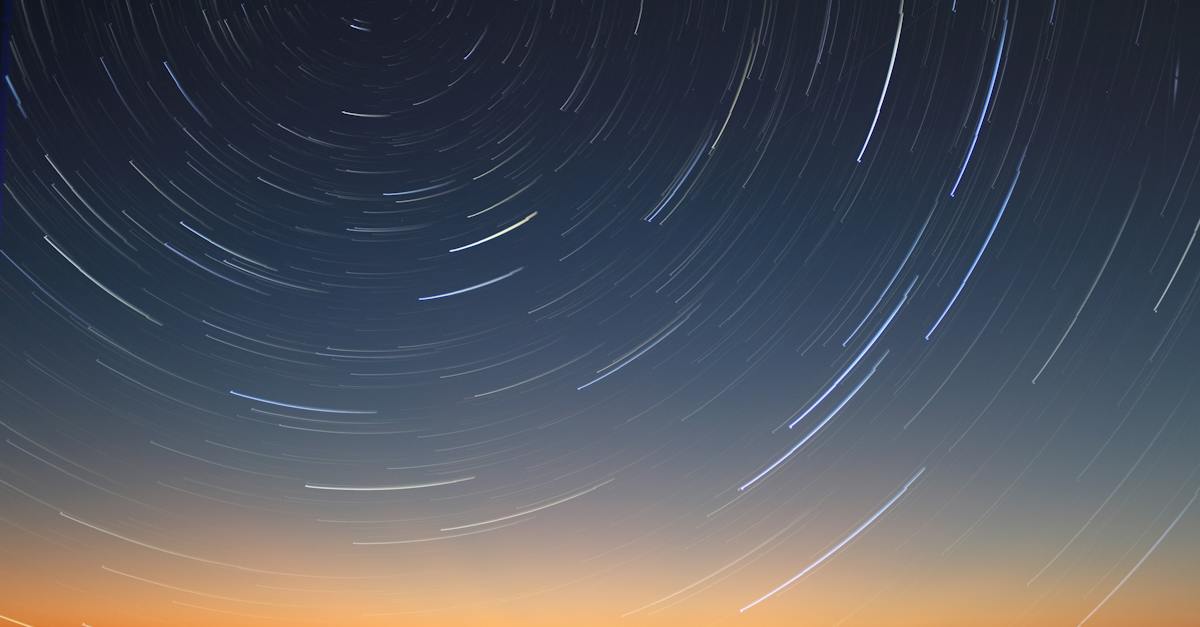This site contains affiliate links to products. I may receive a commission for purchases made through these links.
Ever gaze up at the night sky and wonder about the mysteries it holds? I know I have. That’s why I’m so fascinated by science experiments about space. They offer a glimpse into the vast unknown, and provide insights that can fuel our imagination and knowledge.
Space science isn’t just for astronauts and astrophysicists. With the right tools and a little bit of curiosity, anyone can conduct their own space experiments. Whether you’re a budding scientist or just someone who loves to learn, these experiments can be a fun and educational way to explore the universe.
So, let’s dive in, shall we? Prepare to embark on a journey of wonder and discovery, as we delve into the fascinating world of space science experiments.
The Scale of the Solar System
Let’s delve into one of the most captivating aspects of space science—the scale of the solar system. To comprehend the enormity of our solar system is to unlock a door in our understanding of the universe around us.
Put quite simply, our solar system is massive. It’s a grand cosmic arena dominated by the sun, surrounded by eight distinct planets, dwarf planets, asteroids, comets, and dust particles each with its unique pathway, called orbit, around the sun. The sheer size of our solar system can be hard to truly grasp. In the grand scheme of things, I’m a mere speck—a microcosm within a macrocosm.
The Sun: The Center Stage
To give you an idea of just how vast our solar system is, let’s start with our sun. It’s not just the single largest object in our solar system occupying center stage—quite literally—but also makes up about 99.86% of the solar system’s total mass.
The distance between the sun and Earth is called one Astronomical Unit (AU), and it’s about 93 million miles. Now, imagine this: the distance from the sun to its farthest known planet, Neptune, measures a whopping 30 AU!
| Object | Distance from Sun (AU) |
|---|---|
| Earth | 1 |
| Neptune | 30 |
Planets, Asteroids, and Beyond
But the scale of the solar system doesn’t stop there. Beyond Neptune lies the Kuiper belt, home to dwarf planets like Pluto and an array of other small celestial bodies. Even farther out, the existence of the Oort cloud—a theoretical sphere of icy objects encircling our solar system—is hypothesized.
Keep in mind, these described distances span millions and billions of miles, stretching our comprehension of size and distance beyond its limits.
As we continue our exploration of the cosmos through science experiments about space, it’s clear that the realm beyond our home planet holds endless mysteries. Let’s push the boundaries of our knowledge further and explore the complexity of space phenomena in the next section—comets and their cosmic significance.
Investigating the Phases of the Moon
Having uncovered the immensity of our solar system, it’s time to delve into another fascinating aspect: The phases of the moon. The moon’s changing appearance, from a thin crescent to a full moon and back again, has been observed and analyzed by curious humans for centuries. Yet, understanding these phases isn’t just for seasoned astronomers. With simple science experiments, we can all glean a better grasp of these lunar phases.
One such experiment involves just a few items: An orange, a flashlight, and a dark room. The orange represents the moon, and the flashlight, our sun. By luminating the orange from different angles, you can recreate the different phases of the moon. From the initial crescent to the half-moon, gibbous, and finally the full illumination, it’s a hands-on, illustrative way to comprehend this lunar phenomenon.
Another experimental approach is the ‘Moon Phase Calendar And Calculator’. This isn’t your typical calendar; it’s a unique learning tool that computes the appearance of the moon for any date and time. Using astronomy software, the ‘calculator’ displays an interactive moon image showing the current phase, as well as past and future phases. It’s a digital, yet highly engaging method for understanding the ever-changing phases of the moon.
In both experiments, we’re replicating or calculating the illumination of the moon as it orbits Earth and reflects sunlight. Whether we’re physically manipulating light or utilizing advanced software, it’s the same concept under investigation: The interplay of celestial bodies that results in our moon’s mysterious transformations.
Before we press on, let’s pause to reflect on the astounding fact: The moon’s phases, a regular occurrence in our night sky, are a direct result of our solar system’s particular layout. From our sun at the center to the humble moon’s orbit around Earth – it’s all connected. The beauty of exploring space isn’t just about accepting the facts, it’s about witnessing the sublime dance of celestial bodies and gaining an understanding that extends beyond our own existence.
In our next segment, we’ll explore further astronomical wonders, scaling up from our Earth and moon, to understand the roaring celestial rivers and stars that make up our galaxy.
Building and Launching a Rocket
Now that we’ve explored our closest celestial neighbor, let’s venture a little farther out. We’re diving into the hands-on and explosive side of science experiments: building and launching a rocket. Rocket science might seem like a field exclusively for engineers and NASA enthusiasts, but it’s absolutely graspable at home, with your little scientist by your side.
Let’s kickstart this venture into aerospace engineering. We’ll begin by constructing a homemade rocket. For our easy rocket-making session, we’ll require simple materials that are either already in your house or can be bought from a basic craft supply store. The shopping list includes an empty film canister, baking soda, vinegar, and some decorative materials to create the facade of a bona fide spacecraft. (Don’t forget safety goggles. Safety first!)
Here’s how we’ll proceed:
- Decorate the film canister: Use paints, stickers, or any creative materials around you.
- Prepare the fuel: Mix baking soda and vinegar, creating an acid-base reaction. This mix is our rocket fuel.
- The blastoff: Load the fuel into the canister, close the lid, and step back!
The science behind this? It’s all about the pressure build-up from our homemade “rocket fuel”. The reaction between the vinegar (acid) and the baking soda (base) generates carbon dioxide gas. The gas fills the canister until it’s too much to contain, blasting the lid off, and there goes your rocket!
Please note, the direction of our experiment is upwards, symbolizing humanity’s stride into the cosmos. The rocket’s trajectory is a visual representation of how real-life rockets escape the Earth’s gravitational pull. Real rockets, however, are not propelled by baking soda and vinegar, but liquid or solid rocket fuel.
Let’s not undermine our homemade experiment. It’s a small step in comprehending the immense field of rocket science. Stick around as we’ll be looking into other ways to understand this vast universe we are a part of, right from your living room.
Simulating the Martian Surface
After exploring the basic principles of rocket launches, let’s dive into another stimulating experiment. This hands-on activity simulates the Martian surface, giving participants a taste of the Red Planet’s unique conditions.
Why would we want to simulate Mars, you may ask? Well, with the ongoing exploration and the proposed future manned missions to Mars, understanding its surface becomes crucial. This experiment will give us a glimpse of how scientists prepare for such missions and design Mars Rovers.
This experiment requires basic materials, most of which, you’ll find around the house. You’ll need a large baking pan, a bag of flour, a packet of cocoa powder, and a few common household objects of varying weights and sizes — think toy cars, marbles, or small rocks.
Creating the Martian surface is straightforward. Fill your baking pan with flour until it’s about halfway full. Then, spread a thin layer of cocoa powder over the top. The cocoa powder represents the thin layer of iron oxide dust that covers Mars’ surface.
Next comes the fun part, creating and observing crater impacts. Drop your objects from varying heights and observe the craters they create. This will help you understand how different variables like size, weight, and height of drop affect the crater’s size and shape.
To take this experiment a step further, you could try moving a small toy car across the surface to simulate a Mars Rover. Notice the difference in motion compared to Earth’s surface conditions.
People may wonder how this activity is related to space science. To answer that, it’s crucial to know that understanding a planet’s geology and surface conditions is an essential part of space exploration. These hands-on activities aim to make the learning process easier and more enjoyable.
So there you have it. With household materials and a pinch of creativity, we’ve successfully simulated the Martian surface at home. It’s quite amazing, isn’t it? This simulation gives us a small yet significant insight into the colossal task scientists and astronauts undertake when planning and executing space missions.
The learning doesn’t stop here, though. There are several other simulated experiments you can try at home to further understand our vast universe. So gear up for more exciting space science journeys as we embrace this continuous learning process together.
Creating a Miniature Black Hole
Ready for our next experiment? We’re now moving from Mars to a captivating celestial enigma – the black hole. As intimidating as it may sound, don’t fret! We’re only simulating! We won’t create an actual cosmic destruction.
Remember, the purpose of these experiments is to simulate astronomical phenomena. For this purpose, we’ll create something we’ll call a “gravitational well”. It simulates the gravitational pull that a black hole exerts on the matter around it. Wanna learn more about this exciting event? Let’s dive in!
You’ll need a large sheet of stretchy fabric, some marbles, and a heavier ball like a tennis ball. Stretch out the fabric and secure it. Place the marbles on it. They represent celestial bodies. Then place the heavier ball in the center – That’s our simulation of the black hole. Watch what happens!
Imagine the fabric being space and the slope towards the heavier ball mirroring the immense gravitational pull of a black hole. As soon as the ball is placed, you’ll notice the marbles move towards it, highlighting the irresistible pull a black hole has on surrounding matter.
Impact: Black holes are exotic cosmic phenomena that have captivated scientists and space enthusiasts for decades. Though they seem incredibly far-fetched, and their existence is often considered terrifying, they’re central to our understanding of the universe and its countless mysteries.
Got all that? Great! By conducting these experiments and understanding the science behind them, I’m empowering you to take your knowledge of space exploration to new heights – figuratively and literally! I trust you’re enjoying the journey so far.
Next on our intergalactic adventure, we’ll delve into the exciting world of star constellations. Time to bring out your inner astronomer!
| Materials |
|---|
| Large sheet of stretchy fabric |
| Marbles |
| A heavier ball (tennis ball, etc.) |
Conclusion
I’ve walked you through a thrilling journey into the cosmos with a hands-on approach. We’ve simulated a black hole, seen its gravitational pull in action, and realized its significance in our universe. It’s clear that space science experiments aren’t just fun, they’re a gateway to understanding the vast universe. I encourage you to keep exploring, keep questioning. Dive deeper into star constellations or any other space phenomena that pique your interest. Remember, every great scientist started with a question and the curiosity to find the answer. So, don’t stop here. There’s an entire universe waiting for your discovery.



